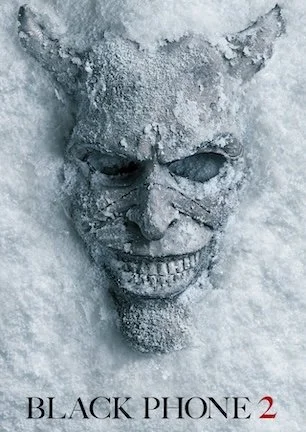Studio: Phase 4 Films
Director: Manuel Carballo
Writer: Hatem Khraiche Ruiz-Zorrilla
Producer: George Ayoub, Gary Howsam, Bill Marks, Julio Fernandez
Stars: Emily Hampshire, Kris Holden-Ried, Shawn Doyle, Claudia Bassols, Barry Flatman, Melina Matthews, Paulino Nunes
Review Score:
Summary:
A world where zombies live normal lives amongst humans is threatened with a second outbreak when the drug that treats the infected begins running low.
Review:
Filmdom needs another zombie movie like Los Angeles needs another car clogging the freeway. Director Manuel Carballo’s Canadian-made thriller “The Returned” further confuses the ever-expanding glut of undead entertainment options by bearing the same name as the English language title for the French television series “Les Revenants.” Although this “The Returned” has more in common with the BBC series “In the Flesh” than it does with its namesake.
Many zombie films, the most derivative ones in particular, include an obligatory scene of someone struggling with a loved one having been bitten and about to turn. The friend/lover/family member then predictably wrestles with an inability to do what needs to be done, usually while stubbornly insisting that that the infected person can be saved, all other concerns be damned.
“The Returned” is an entire film centered on such a conflict, and then expanded into feature length. While that summation sounds as devoid of allure as it generally plays in every other onscreen instance of the cliché, it is the fiction framing this version that makes “The Returned” unique.
After a zombie outbreak devastates civilization, science discovers that the infected can remain human by injecting a protein extracted from the spines of dead zombies. The first caveat is that the initial dose must be administered within 36 hours of exposure and the injection must then be taken every 24 hours or else that person will turn. Think of it like a diabetic’s insulin, except those around the diabetic end up dying if a dose is skipped.
The second caveat is that society is not universally open to the idea of living with ticking time bombs in their midst. The “returned” either choose to live with their affliction in secret or risk the stigma of being a lightning rod for vehement bigotry.
Alex is one of those living with the private shame of being “returned.” Tired of hiding from those closest to him, Alex “comes out” to his best friends in order to finally lift his heavy emotional weight and to find comfort in their support. Synthesized treatments have been unsuccessful, and with supplies of the zombie protein dwindling, the world finds itself on the eve of a new crisis. Already unhealthy fears about a second outbreak give rise to looters stockpiling stolen injections and vigilantes looking for ways to stop the problem before it starts.
George A. Romero taught that zombie epics are most effective when they are used as allegory. This is a lesson forgotten often by lesser filmmakers churning out one yawn-inducing gorefest after another mistakenly focused on monsters attacking humans and humans attacking monsters. Manuel Carballo and writer Hatem Khraiche, on the other hand, paid attention to what makes Romero the master.
Other zombie scenarios are sold with sets and visual effects. “The Returned” creates its environment through behavior. While not a popular opinion to express in public, the antagonists here muse about shipping the returned to a modern leper colony. The government proposes internment camps. Measured stares and long looks by shopkeepers translate into unspoken tones of “you are not welcome.” “The Returned” trades savage reanimated corpse action for a thoughtful, human drama about how fear mongering leads both to intolerance and to desperate behavior.
This is a world not grounded in comic book conventions, but in frighteningly familiar prejudices paralleling real-world reactions seen when dealing with racism, homophobia, and health epidemics such as AIDS. The serious way in which the script respectfully treats its themes is in no way diminished by the fact that its characters are surrounded by the potentially living dead, and it does not make the message any less relatable.
Along with moral dilemmas about how to behave towards the afflicted, “The Returned” introduces ethical questions to mull over when the treatment shortage strikes. If a limited number of lives can be saved, whose are most important? What is the line distinguishing self-preservation from selfishness? How far should one go to fight and at what point should one give up?
“The Returned” makes a zombie epidemic sympathetic by portraying a preventable apocalypse instead of one that has already come to pass. Viewers psyched for chewed limbs, army assaults, and animated skeletons need to know that “The Returned” is much more of a serious thinker than a jump jolt horror film. The emotion is never too sentimental, but it can become weighty, and looks to rebalance a quiet pace with a fluid camera. Scenes of talking, walking, and pondering are pepped up with an “always on” Steadicam casually drifting around conversations or following chattering heads Aaron Sorkin-style. It is a visual style that anchors the film in a tasteful look to complement a dark mood.
“The Returned” chooses an atypical examination of post-zombie society and in so doing, ends up with a very human perspective on an inhuman situation. Horror fans with different expectations may be disappointed in a tone more about human behavior than inhuman action, but plenty of those latter films already exist. “The Returned” is a uniquely intelligent movie intent on proving that there is still new life to be found in a genre about the dead.
Review Score: 85






If “Match” had been shot in the 1970s, it would have become a cult classic for its skin-crawling weirdness that’s still snicker-worthy in a wicked way.